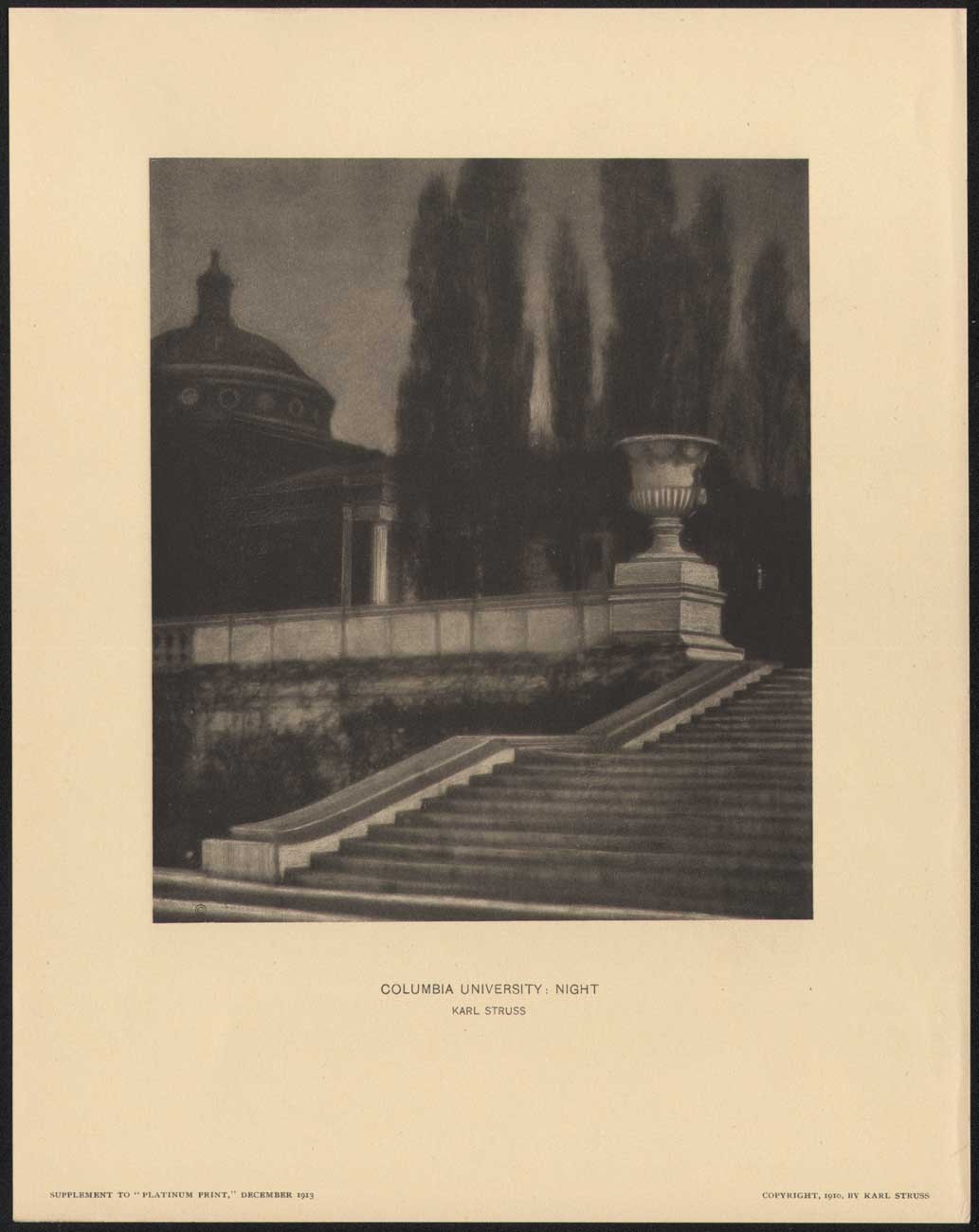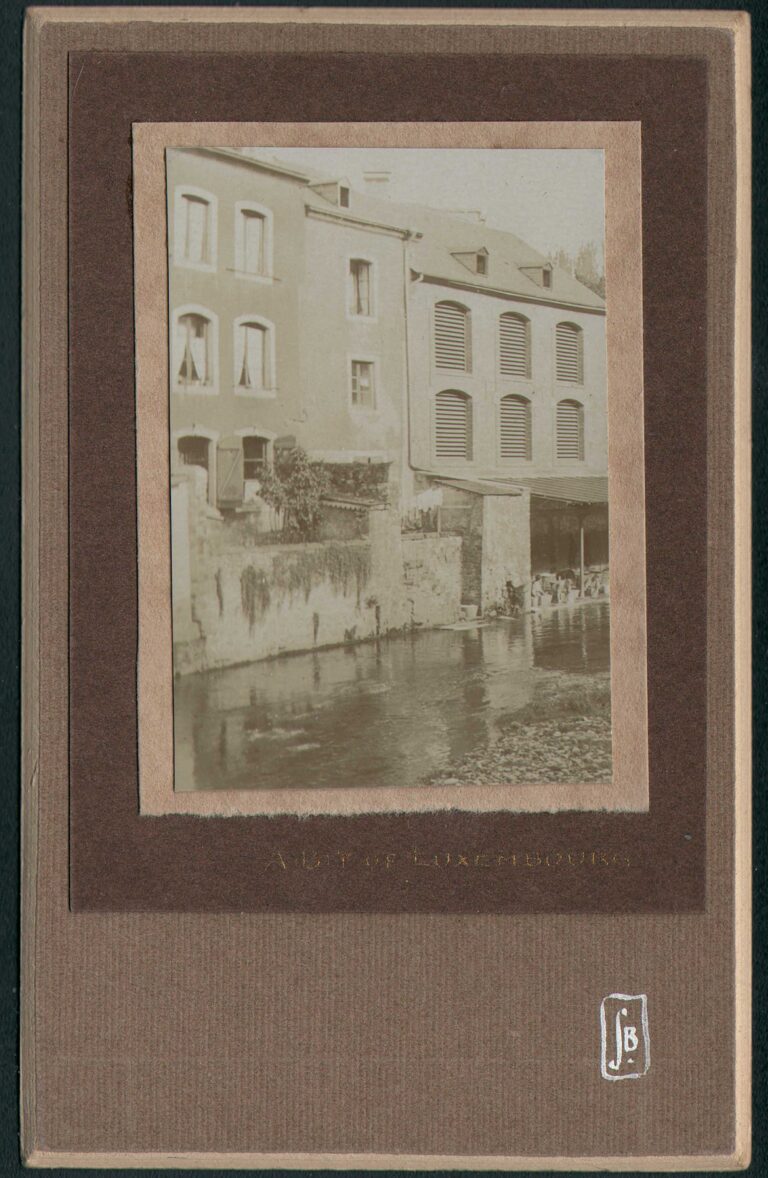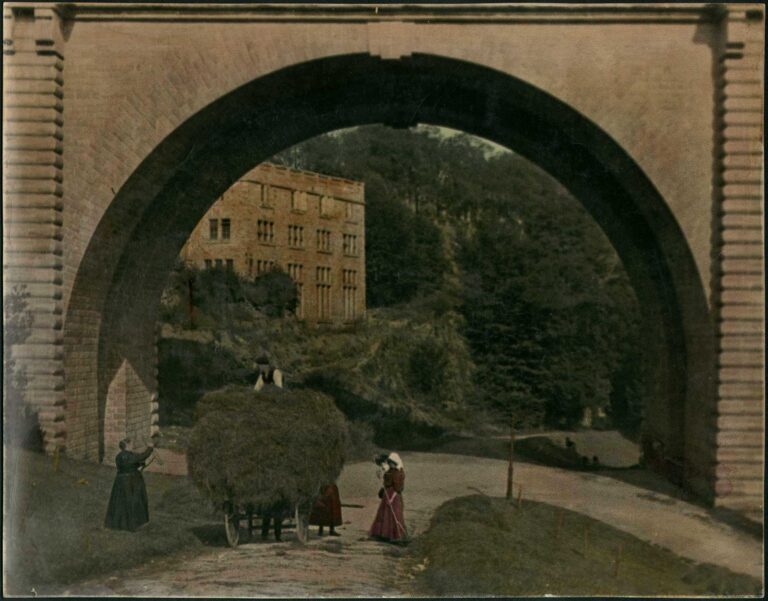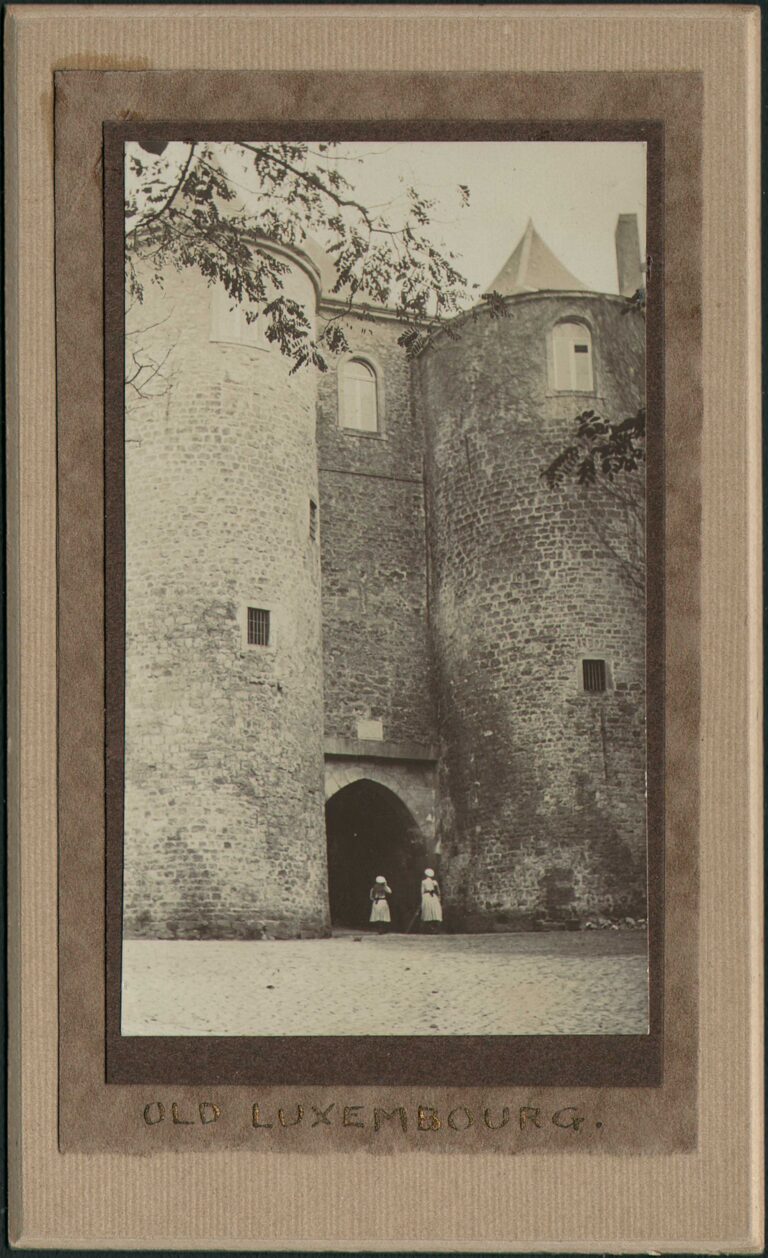
Columbia University : Night
Photographer Karl Struss originally did this nighttime study of the Columbia University campus in 1910. Taken from the vantage point of Broadway, the view shows one of the large urns flanking a stairway with Earl Hall, designed by the architectural firm of McKim, Mead and White and originally built from 1900-02, at background left.
The photograph, an exceedingly fine plate reproduction done using a machine-printed variation of the rotogravure process known as a mezzogravure, (but lacking a dot pattern on magnification) was included as an special insert in the second issue of the short-lived pictorial photography journal Platinum Print- A Journal of Personal Expression.
The London correspondent for this journal, American photographer Alvin Langdon Coburn, wrote an article on the photogravure process, of which he was expert at, for the first issue dated October, 1913. In it he gives credit to a London firm for a supplement plate included, the same firm responsible for printing the plate seen on this website, Columbia University : Night for the second issue:
…Until quite recently photogravure has remained very much unchanged since Fox-Talbot invented it some sixty years ago. It gives richness and beauty equalled by no other method of reproducing photographs. The scientific mind, however, is never idle, and much experimental work has been carried on to make it possible to print photogravures by machinery in such a manner that the speed of production would compete with half-tone, and the quality absolutely annihilate it!
Now almost simultaneously, in various parts of the world, the process has become a working success, and accompanying this article is a reproduction of one of my prints, “Thames Barges”, from the press of the Mezzogravure Company of London, whose methods of working are a carefully guarded secret and the result of much experiment and research. Their gravures have all the richness of a hand-printed plate, and possessing besides this, a new and very remarkable silk-like lustre in the high lights, due probably to the great pressure used in printing. A very beautiful process, I think you will admit, which will revolutionize and eventually displace that of the half-tone. (pp. 2 & 5)
More particulars on the reproduction process used for this plate are revealed the following year in the May, 1914 issue:
The “New York Times” is making an awful holler about its Rotogravure reproductions, which are very beautiful indeed. We might say, however, that in the October number of “Platinum Print” was printed a supplement, “Thames Barges,” by Alvin Landon Coburn, by a similar process, and no noise was made about it. (p. 13)
Credit for the press-work, including many fine halftone reproductions appearing in Platinum Print, is given to the Bartlett-Orr Press of New York City. The following editorial comment appeared on p. 13 of the December, 1913 issue:
In the Bartlett-Orr Press we encountered printers possessing a fine feeling for decorating space, and their interest in our efforts have contributed in great measure to make “Platinum Print” singularly beautiful. The smaller type is known as Caslon, and is much identified with printing in America.
On the same page, the following notice appeared informing subscribers they could additionally purchase Columbia University : Night without the overprinting:
Subscribers desiring Karl Struss’ “Columbia University: Night” may obtain same without printing, suitably mounted and ready for framing at 25 cents each.
additional print details support recto: printed along lower margin:
Supplement to “Platinum Print,” December 1913 (left corner)
Copyright, 1910, By Karl Struss (right corner)
The printed copyright symbol © also appears within image at lower left corner.



